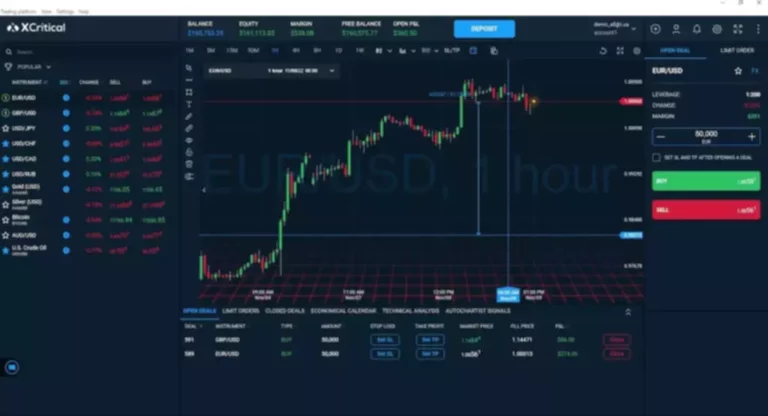Content
The market maker, in turn, makes their profits from the bid-ask spread on these orders when executing the trades. The money that market makers collect from PFOF is usually fractions of a cent on each share, but these are reliable profits that https://www.xcritical.com/ can turn into hundreds of millions in revenue a year. In recent years, a number of firms have exited or sold their wholesaling businesses, leaving just a handful of electronic trading firms that handle PFOF. Public Investing is a wholly-owned subsidiary of Public Holdings, Inc. (“Public Holdings”).
Robinhood’s Controversial PFOF Model
A bond’s yield is a function of its market price, which can fluctuate; therefore a bond’s YTW is not “locked in” until the pfof meaning bond is purchased, and your yield at time of purchase may be different from the yield shown here. The “locked in” YTW is not guaranteed; you may receive less than the YTW of the bonds in the Bond Account if you sell any of the bonds before maturity or if the issuer defaults on the bond. All investments involve the risk of loss and the past performance of a security or a financial product does not guarantee future results or returns.

Understanding Payment for Order Flow In Online Trading
Retail brokerages, in turn, use the rebates they collect to offer customers lower — or often zero — trading fees. The payment for order flow landscape in Canada is characterized by nuances often misunderstood by many investors. While PFOF is not permitted on Canadian listed securities under current financial regulations, many Canadian brokerages have the liberty to accept PFOF on non-Canadian listed securities. This distinction underscores the importance of understanding the scope and implications of PFOF regulations, particularly for investors with exposure to cross-border securities.

Lower commissions and fees, price improvement
The SEC said it believed some brokerages might have been encouraging customers to trade so they could profit from PFOF. An important part of the NMS was creating the NBBO, which requires all trading venues to display their best available bid and offer prices, and for trades to be executed at these prices or better. This was meant to promote competition among trading venues, which should lead to better prices for investors. While commission-free brokerages like Robinhood receive a majority of their revenue through PFOF, there are significant differences in the PFOF between trades executed for stocks and options. While payment for order flow may offer some benefits, traders should be aware of the potential conflicts of interest and their impact on market liquidity and price efficiency. It’s a way for brokers to make money while also providing liquidity to the market and potentially better prices for customers.
- There is conflicting research as to whether PFOF actually improves order execution quality or not.
- In-house exchanges may be established, and investors may have to pay a fee to trade on these exchanges.
- But I wonder the match would be offset by PFOF in the long-term and whether other low cost brokers (Vanguard, Fidelity, Schwab) also use PFOF if I wanted to avoid it.
- Output from Alpha should not be construed as investment research or recommendations, and should not serve as the basis for any investment decision.
- Investment returns and principal value will fluctuate such that an investment, when redeemed, may be worth more or less than the original cost.
- While PFOF can provide access to low-cost trading platforms, it may come with potential conflicts of interest.
- But don’t worry – we’re here to help you navigate this complex topic and make informed decisions about your trades.
Subsidizing Liquidity: The Impact of Make/Take Fees on Market Quality
Regulations require that brokers fill orders at what’s called the NBBO (National Best Bid and Offer) or better. Let’s step outside the retail trading world for a moment and just think about how businesses generally market and sell their merchandise. Many businesses pay referral fees to individuals or other businesses for sending customers their way. Brokers’ commissions have changed with the rise of low-cost alternatives and online platforms.
Of course, not all differences in options and stock trades would be so stark. Market makers thus provide brokers with significantly more in PFOF for routing options trades to them, both overall and on a per-share basis. Based on data from SEC Rule 606 reports, researchers in the 2022 study mentioned above calculated that the typical PFOF paid to a broker for routing options is far more than for stocks. To ensure that you are getting the best possible execution on your trades, consider researching different online trading platforms and comparing their payment for order flow practices. There are concerns about conflicts of interest when brokers receive payments from market makers.

Hidden orders are invisible on level 2, while iceberg orders display only a portion of the total shares being traded. Both types of orders allow traders to mask their true share size and avoid disrupting momentum or pushing prices away. Additionally, there is a risk that these firms may not disclose their involvement in payment for order flow arrangements to investors, leading to potential conflicts of interest. Currently, payment for order flow is a hot topic in the stock market, especially among online brokers like Robinhood, Charles Schwab, and Fidelity. By advocating for stronger protections, retail traders can help create a more transparent and equitable stock market.
Because retail order flow is seen as the bread and butter of the market maker’s operation, it’s in the market maker’s best interest to attract that order flow. Hence the compensation or “payment” they may offer to brokers for that order flow. Robinhood, the zero-commission online broker, earned between 65% and 80% of its quarterly revenue from PFOF over the last several years. Below, we explain this practice and the effects it can have on novice and experienced investors alike. Traders should be aware of the time the order was executed, the best bid, and the bid-ask spread, as these factors can impact the execution price. For instance, payment for order flow can create conflicts of interest and potential price manipulation by market makers.
Brokers benefit from the compensation they receive for directing trades to the market makers, and customers potentially benefit from better prices and execution quality. Payment for order flow is a practice where brokers receive compensation for directing customer trades to particular market makers or trading firms. One of the main advantages of PFOF for traders is the reduction in trading costs.
This allows them to manage their inventory more effectively and to profit from the bid-ask spread. However, this practice can also lead to potential conflicts of interest, as market makers may be incentivized to execute orders at prices that are not the most favorable for clients. The process begins when a client places an order through a brokerage firm. The broker then routes the order to a market maker or other liquidity provider, who executes the order on behalf of the client. In return for routing the order, the broker receives a payment from the market maker. Despite its widespread adoption, PFOF has been a subject of controversy and regulatory scrutiny.
It is not intended to constitute investment advice or any other kind of professional advice and should not be relied upon as such. Before taking action based on any such information, we encourage you to consult with the appropriate professionals. Market and economic views are subject to change without notice and may be untimely when presented here. Do not infer or assume that any securities, sectors or markets described in this article were or will be profitable. Historical or hypothetical performance results are presented for illustrative purposes only. Thats why Public doesnt use PFOF and instead uses tipping to help pay for executing market orders so we can bridge the gap between our brokerage and the investors who we serve.
Vanguard funds not held in a brokerage account are held by The Vanguard Group, Inc., and are not protected by SIPC. Brokerage assets are held by Vanguard Brokerage Services, a division of Vanguard Marketing Corporation, member FINRA and SIPC. The larger stock market is made up of multiple sectors you may want to invest in. A PFOF trader is just another word for a broker-dealer who uses PFOF to execute retail orders. Securities and Exchange Commission (SEC) requires broker-dealers to disclose their PFOF practice in an attempt to ensure investor confidence.
Investors who trade infrequently or in very small quantities might not feel the direct effects of their brokers’ PFOF practices, although it might have wider effects on the supply and demand in the stock market as a whole. Frequent traders and those who trade larger quantities at one time need to learn more about their brokers’ order-routing process to ensure they’re not losing out on price improvement. The SEC permitted PFOF because it thought the benefits outweighed the pitfalls. Smaller brokerage firms that may have trouble handling large numbers of orders can benefit from routing some of those to market makers. Brokers receiving PFOF compensation may be forced by competition to pass on some of the proceeds to customers through lower costs, like low- or no-commission trading. Investors use brokerage services to buy or sell stocks, options, and other securities, generally expecting good execution quality and low or no commission fees.

















